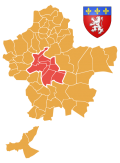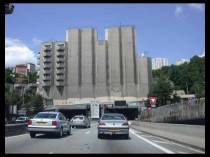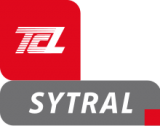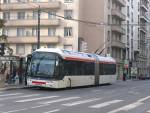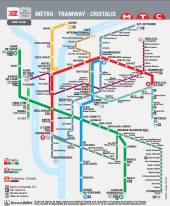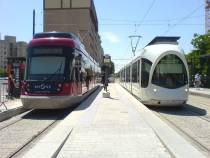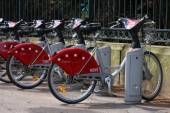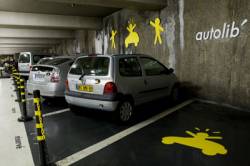User Tools
Table of Contents
TRANSPORT IN THE GREATER LYON AREA
By Claire Coquin & Margaux Martinet (Sainte-Marie Lyon), October 2013
1. The need for a coherent transport policy
Greater Lyon has an area of 515 km2 and is composed of 58 municipalities located in and around Lyon. Transport is very important to an area with more than one million inhabitants. In addition there is quite a lot of tourism, as well as through-traffic due to its location on the very important Lille-Paris-Lyon-Marseille axis of communication. Therefore the city’s transport policy has to be well thought out to ensure that commuters from around Lyon, tourists, and the Lyonnais themselves can all move about this city.
2. From cars to public transport
|
From after the Second World War to the 1970s, urban policy was favorable to the use of cars. The A7 highway was built, as well as the Fourvière tunnel and the motorway junction at Perrache. But because of the large number of traffic jams and especially since the oil crisis of 1973, Greater Lyon has been encouraging other kinds of urban transport. |
Nowadays Lyon promotes various modes of public transport. Indeed, the city has the second largest transport network in France and a city dweller no longer needs to take his car to move about Lyon. “TCL” is the name of the public transport network; in French it means “Transport en Commun Lyonnais”. It offers bus, tram and underground train services and is run by SYTRAL. The bus network allows all of Greater Lyon’s municipalities to be linked up. |
3. Buses
Apart from traditional buses and long articulated buses, there are also trolleybuses/streetcars which work with electricity from overhead lines in the street. However Lyon’s buses are not always on time and in today’s world travelers sometimes complain of having to wait for a bus.
4. Lyon's subway network
So most prefer to take the subway because unlike buses, it is very fast and the service more frequent. It represents 50% of daily traffic. There are four subway lines in Lyon, indicated on maps by the letters A, B, C and D. The C line is quite different: it is the only rack-rail subway in the world. Lyon's subways are modern: one of them is completely automatic, and the others are semi-automatic. Buses and subways circulate from five o’clock in the morning to midnight, including on Sundays and holidays.
5. The funicular trains
In Lyon you can also take the two funiculars which go up and down the Fourvière hill. In the past, there were five funiculars in the city nicknamed “ficelles” (or “threads” in English).
6. Trams
Trams are another type of public transport. The Greater Lyon tram network is made up of five lines (called T1, T2, T3…) and is longer than the underground network (trams ≈ 53km / tube ≈ 35km). It serves Lyon and some of its suburbs, for example Bron, Meyzieu, Villeurbane, Vaux-en-Velin, and Décines. The Rhône Express line links the city to the airport. It is very useful but more expensive than other trams. Trams are a quiet, clean, electrically-powered means of travelling. So they are good for the environment and pleasant for passengers. They help to limit the use of cars inside the city. This objective is encouraged by the siting of car parks near the tram stations and making sure there are fewer car parks in the city. Some “parks and ride” in Lyon are available to users of public transport but they must have a TLC subscription.
7. Velov' Rent-a-bikes
There are other kinds of transport which don’t belong to the TCL network but which are also part of the city’s urban transport policy. Since 2005, Greater Lyon has put many cycles at the disposal of Lyon’s residents. They can rent bicycles every day at any time. The first 30 minutes are free but if you want to use them for longer, you have to pay. Anyone can rent a cycle, the only condition being that the user must be over 13 years of age. This very original service called “Velov’” was the first in France and has now spread to many other French cities.
8. Car rentals
|
The rental idea has also been extended to cars. On January 1st, 2008, the company Lyon Parc Auto opened an automobile self-service system called “Autolib’”. There are now 34 self-service stations in Lyon and its suburbs. This private company owns 100 vehicles. |
It is really simple to rent a car but users have to take out a monthly subscription. Unlike the Velov’ bicycles, this service is not free: users must pay for the distance traveled when the car is returned. A vehicle can be rented for 1 or 2 hours. Very recently, in October 2013, a similar–but electric—car renting service called “Bluely” was set up: it remains to be seen how successful this will prove. While Greater Lyon doesn't directly promote the development of these car services but it certainly smiles on simple, occasional solutions for moving about in the city without car ownership. |
9. Conclusion
So we can conclude that Greater Lyon wants to improve its residents’ and visitors’ travel experience through various solutions: buses, trolleybuses, undergrounds, trams, funiculars, and cycles. All these means of transport help to reduce the use of cars and thereby to reduce pollution which, as in many other cities, is quite high. According to the city’s statistics, the short-term objectives of the urban policy have been greatly exceeded but cars are still the most used form of transport (47.7 % of all journeys made). Public transport only makes up 16.8% of all journeys, but with fewer and fewer parking spaces in town and a more constricted access to downtown Lyon this will only go up.

